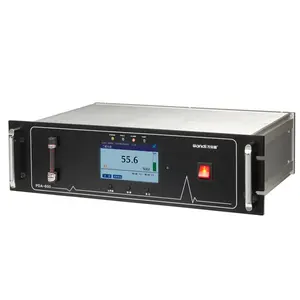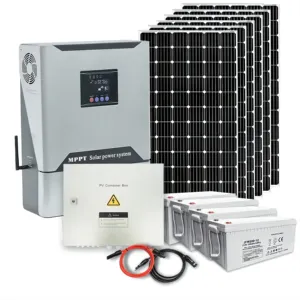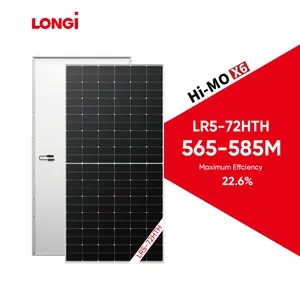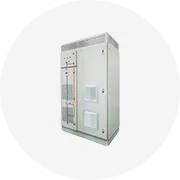Popular in your industry






2024 Portable Spe Pem 150ML Brown Gas Hydrogen Generator Inhaler Hydrogen Inhalation Machine 110ml Hydrogen Devices
IDR 3,920,848 - IDR 5,064,428
Min. Order: 1 piece
4.8/5.0 (210)·"fast shipping"





Fixed Gas Monitors Replacement Sensor Transmitter Hydrogen Cl2 So2 H2S Co2 Combustible Helium Fixed Gas Detector
IDR 816,844 - IDR 3,267,373
Min. Order: 1 piece
4.1/5.0 (11)·"quality manufacture"






Suyzeko 99.99% Pure Health Hydrogen Gas Breathing Machine PEM Hydrogen Oxygen Inhaler 900ML 1500ML 3000ML Hydrogen Generator
IDR 6,289,693 - IDR 38,881,737
Min. Order: 10 pieces
4.9/5.0 (54)·"Fast shipment"






1.5l Stainless Steel Schumann Resonance Hydrogen Pem Water Bottle Hydrogen 1600 Bbp Large 1500ml Technology4.7/5.0 (40)·"friendly service"
Ready to Ship
IDR 244,727 - IDR 318,569
Min. Order: 2 pieces
Shipping per piece: IDR 89,853







Suyzeko Multi-function Hydrogen Gas Generator Antioxidant Hydrogen Water Generator Nasal Hydrogen Gas Inhaler

IDR 6,028,303 - IDR 74,822,838
Min. Order: 1 unit
4.9/5.0 (54)·"Fast shipment"
- 30%






RTTPP H2 Hydrogen Leak Monitor Industrial Fixed Hydrogen Gas Content Alarm H2 Gas Detector5.0/5.0 (15)·"Great store"
Ready to Ship
IDR 163,369 - IDR 14,998,058
Min. Order: 5 pieces
Shipping per piece: IDR 1,122,343







Factory Price EX / O2 / CO / H2S Portable Multi Gas Detector Gas Monitor 4 In 1 Gas Detector
IDR 161,735 - IDR 1,306,950
Min. Order: 1 set
5.0/5.0 (15)·"Great store"





3000ml 4200ml Portable Molecular Breating Inhalation Therapy Oxygen Air Hydrogen Gas Generator Machine H2 Inhaler
IDR 19,604,237 - IDR 31,856,885
Min. Order: 1 set
5.0/5.0 (1)





Refillable 20l 30l 40l 50l 60l 70l Industrial Gas Cylinder N2/Nitrogen O2/Oxygen/Co2/H2/Hydrogen Cylinders With Iso9809-3
IDR 424,759 - IDR 1,306,950
Min. Order: 50 pieces
0.0/5.0 (0)





Home PEM 600ml 900ml H2 Generator Machine 1500ml Browns Gas Generator Portable 3000ml Hydrogen Inhalation Machine for Breathing
IDR 19,604,237 - IDR 31,856,885
Min. Order: 1 set
4.7/5.0 (38)·"customer service"





Water Electrolysis Hydrogen H2 Gas Generation Equipment/Plant/Apparatus
IDR 5,614,326,683 - IDR 5,717,902,400
Min. Order: 1 set
0.0/5.0 (0)·"Good service"





PEM Tech 1500ml H2 Inhaler Brown Gas Generator Hydrogen Inhalation Machine 3000ml Hydrogen Molleculaire Inhalation Generator
IDR 9,802,119 - IDR 40,842,160
Min. Order: 2 pieces
4.8/5.0 (210)·"fast shipping"Related Searches:
50l hydrogen gashydrogen gas in malaysiachina hydrogen gasprice of hydrogen gashydrogen gas malaysiahydrogen gas lelprice hydrogen gas kgpure hydrogen gashydrogen inert gasproduce hydrogen gashydrogen from natural gastest hydrogen gasindustrial use of hydrogen gashydrogen a gasindustrial grade hydrogen gas






Explosion proof H2 monitor Hydrogen gas detector4.9/5.0 (20)·"good service"
Ready to Ship
IDR 1,388,634 - IDR 2,532,214
Min. Order: 1 piece
Shipping per piece: IDR 559,048



LPG/PNG/LNG/CNG/H2/CH4/AMMONIA Portable Ch4 Gas Detector at Wholesale Price Professional Manufacturer
IDR 4,713,676 - IDR 4,746,350
Min. Order: 5 pieces
0.0/5.0 (0)





3000ml SPE PEM electrolyzer hydrogen generator h2 gas electrolyser cell5.0/5.0 (6)·"Excellent service"
Ready to Ship
IDR 16,826,970 - IDR 19,244,826
Min. Order: 1 piece
Shipping per piece: IDR 477,364






H2 gas producing 1 -200Nm3 /h PEM high purity 99.999% pem fuel cell hydrogen generator water electrolyzer
IDR 163,368,640 - IDR 326,737,280
Min. Order: 2 units
5.0/5.0 (8)·"good service"





Promotion Compressed Hydrogen Gas with Cylinder Liquid Hydrogen H2 Gas
IDR 9,803 - IDR 16,337
Min. Order: 100 kilograms
5.0/5.0 (14)·"Good Delivery"





50L 99.99% gases helium nitrogen gas/hydrogen gas/Gas H2 with cylinder
IDR 326,738 - IDR 408,422
Min. Order: 50 pieces
4.6/5.0 (2)





Suyzeko New technology Gold Plating electrolyze Japanese H2 gas generator Hydrogen oxygen inhalation therapy machine 900ml
IDR 2,744,594 - IDR 42,149,110
Min. Order: 2 sets
5.0/5.0 (9)·"Fast logistics"





Production of hydrogen gas from water ozone generated with oxygen generator h2 hydrogen generator
IDR 45,743,220 - IDR 49,010,592
Min. Order: 1 set
5.0/5.0 (4)·"friendly customer service"





Trace High Purity Hydrogen Concentration H2 Gas Analyzer
IDR 32,673,728 - IDR 45,743,220
Min. Order: 1 set
0.0/5.0 (0)





SPE PEM 1000ml 1500ml 2000ml 3000ml Brown Gas Hydrogen Gas Inhaler Hydrogen Inhalation Machine H2 Generator Machine
IDR 29,406,356 - IDR 32,673,728
Min. Order: 1 piece
4.3/5.0 (9)·"good service"





Best Price Industrial Grade 99.999% 6N Purity Hydrogen H2 Gas 10m3 Hydrogen Filled in 50L Cylinder
IDR 1,061,897
Min. Order: 100 pieces
5.0/5.0 (1)·"good supplier"



Online hydrogen H2 infrared gas analyzer for hydrogen gas cylinder NDIR H2 gas sensor
IDR 32,657,392 - IDR 48,994,256
Min. Order: 1 piece
0.0/5.0 (0)·"good supplier"





Molecular Glass PEM Hydrogen Water Bottle H2 Cup Hydrogen Gas Generator Electrolyzer Hydrogen Inhaler4.9/5.0 (5)·"Fast delivery"
Ready to Ship
IDR 898,528 - IDR 963,875
Min. Order: 1 piece
Shipping per piece: IDR 376,402






1800ml/min hydrogen generator SPE PEM Technology H2 Inhaler Hydrogen Gas Generator Breath Hydrogen Inhalation Machine
IDR 17,153,708 - IDR 19,604,237
Min. Order: 1 acre
4.5/5.0 (11)





high accuracy hydrogen H2 gas alarm unit gas concentration purity analyzer gas detector4.9/5.0 (68)·"Great service"
Ready to Ship
IDR 7,841,695 - IDR 10,618,962
Min. Order: 1 unit
Shipping per piece: IDR 465,764




Portable Gas chromatography use hydrogen generator GC fuel gas H2 generator
IDR 9,802,119 - IDR 11,435,805
Min. Order: 1 set
5.0/5.0 (1)·"fast shipping"





Refillable ISO9809-3 10l 20l 30l 40l 50l 60l Industrial Aluminium Steel Gas Cylinder O2/oxygen Co2/h2/hydrogen Cylinders
IDR 1,241,602 - IDR 1,306,950
Min. Order: 2 pieces
0.0/5.0 (0)





Portable Hydrogen Sulfide H2S Gas Analyzer oxygen concentrator analyzer Single H2S Gas Detector
IDR 506,443 - IDR 4,214,911
Min. Order: 1 set
4.9/5.0 (49)·"Excellent service"




H07-01PEM Hydrogen Electrolytic Cell Hydrogen Generator H2 Electrolyzer
IDR 400,254 - IDR 408,422
Min. Order: 1 unit
5.0/5.0 (4)·"Great service"





99.99% Purity H2 Gas Making Machine Hydrogen Generator Inhalation Machine PEM Electrolyzer Hydrogen Generator
IDR 5,717,903 - IDR 11,435,805
Min. Order: 2 sets
4.6/5.0 (12)·"good service"





High Pressure Cylinder Hydrogen Gas H2 Cylinder
IDR 1,143,581 - IDR 12,252,648
Min. Order: 10 pieces
0.0/5.0 (0)


Zhongzheng PEM SPE Technology Hydrogen PEM Electrolyzer Hydrogen Generator H2 Gas
IDR 187,547,199 - IDR 1,878,739,360
Min. Order: 2 pieces
2.9/5.0 (5)·"fast delivery"





0-1000PPM Hydrogen H2 Gas Detector Durable For Battery Leakage Detection
IDR 4,901,060
Min. Order: 5 pieces
4.8/5.0 (11)·"customer service"





CE WALL MOUNTED HYDROGEN SULFIDE H2S H2 SULFUR DIOXIDE SO2 METHANE CH4 NITROGEN DIOXIDE NO2 PH3 TVOC GAS AIR QUALITY DETECTOR ME
IDR 408,422 - IDR 490,106
Min. Order: 1 piece
4.8/5.0 (56)·"Good service"


9 kg Nitrogen N2 Hydrogen H2 Oxygen O2 Diameter 140mm Thickness 3.6mm Gas Cylinders With Valve
IDR 392,085 - IDR 490,106
Min. Order: 1 piece
5.0/5.0 (1)·"great supplier"





H2 Generator Electrolysis Gas Inhaler Machine Ultra High Purity Hydrogen Generator Inhalation Machine
Ready to Ship
IDR 704,118,839 - IDR 753,129,431
Min. Order: 1 set
0.0/5.0 (0)





Industrial fixed hydrogen etector toxic gas h2 detection detector gas alarm 8 channel led gas alarm controller4.9/5.0 (4)·"extraordinary service"
Ready to Ship
IDR 2,809,941 - IDR 3,022,320
Min. Order: 1 set
Shipping per piece: IDR 397,313
Top categories
About h2 hydrogen gas
5981 h2 hydrogen gas products are offered for sale by suppliers on Alibaba.com, of which hydrogen generator accounts for 37%, gas analyzers accounts for 14%, and gas generation equipment accounts for 8%.
A wide variety of h2 hydrogen gas options are available to you, such as manufacturing plant, hotels and construction works.You can also choose from russia, thailand and egypt h2 hydrogen gas,as well as from plc, pressure vessel, and motor h2 hydrogen gas,and whether h2 hydrogen gas is provided, or not available.




















